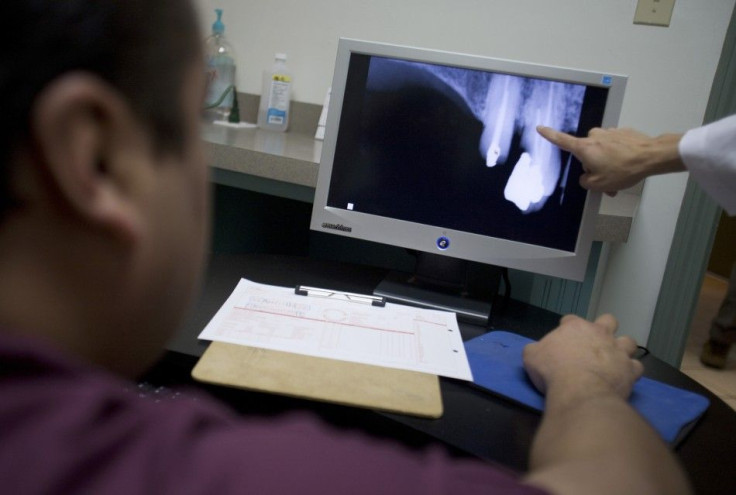Dental X-Rays Linked To Brain Tumors

Visits to the dentist are nobody's idea of fun, but for children, dental checkups may be a lot scarier than they realize. Children who receive frequent dental X-rays are at an increased risk of meningiomas, a common brain tumor, according to a new study.
Meningiomas are tumors found in the meninges, the membrane that surrounds the brain and spinal cord, and account for over a third of all brain tumors in the United States. While the majority are benign, some can increase pressure in the brain, causing seizures, muscle weakness and vision problems.
The increased risk of meningiomas depends on which method of X-ray dentists' use. Bitewing X-rays, in which a piece of film is placed between the teeth and then exposed to a beam of radiation, almost doubled the risk of tumors in children who received them once a year or more, according to the study. Over 92 percent of the population has undergone a bitewing X-ray, according to Medscape.
A panoramic X-ray, which moves around the head to give a picture of all the teeth to determine if braces are needed, nearly quintupled the risk, according to the study. Panoramic X-rays are much less common than bitewing, according to Medscape.
The researchers acknowledged that the study does not prove X-ray radiation caused the tumors, but instead, offers a potential link. The radiation dose was much higher in the past, which puts older generations at risk more than children today. However, despite the reduced amount of radiation in current X-rays, the researchers said it's important to revisit the guidelines and make sure people do not receive X-rays in excess.
The American Dental Association currently recommends healthy children receive dental X-rays once or twice a year and healthy adults every two to three years. However, people often receive them more often than that, according to the study.
I do not get the feeling that people are aware of those guidelines, Dr. Elizabeth B. Claus, study author and epidemiologist at the Yale School of Medicine, told HealthDay. Many people are having them every six months or every year when the American Dental Association is saying once every two to three years.
However, the study relied on patients' memories of how many dental X-rays they received up to 20 years earlier, which calls the results into question, according to the ADA.
Studies have shown that the ability to recall information is often imperfect, the organization said in a statement. Therefore, the results of studies that use this design can be unreliable because they are affected by what scientists call 'recall bias.' Also, the study acknowledges that some of the subjects received dental x-rays decades ago when radiation exposure was greater.
Although the findings are scary, Claus said you can't use it as an excuse to skip your yearly checkup.
Don't panic and don't not go to the dentist, she told the Washington Post. But do look into the guidelines and talk with your dentist. It's worth having that conversation.
Regardless of any guideline changes that come from the study, Dr. Alan G. Lurie, president of the American Academy of Oral and Maxillofacial Radiology, who was not involved in the study, told ABC News that doctors still need to follow the As Low As Reasonable Achievable principle, which states that people should be exposed to as little radiation as possible.
No matter how low the dose gets, it's more than zero, so you need to have a good reason [for the X-ray], he said. He also recommended patients ask their dentists What is it going to tell you that will help you decide how to treat me?
The journal Cancer will publish the study in its April issue.
© Copyright IBTimes 2024. All rights reserved.




















